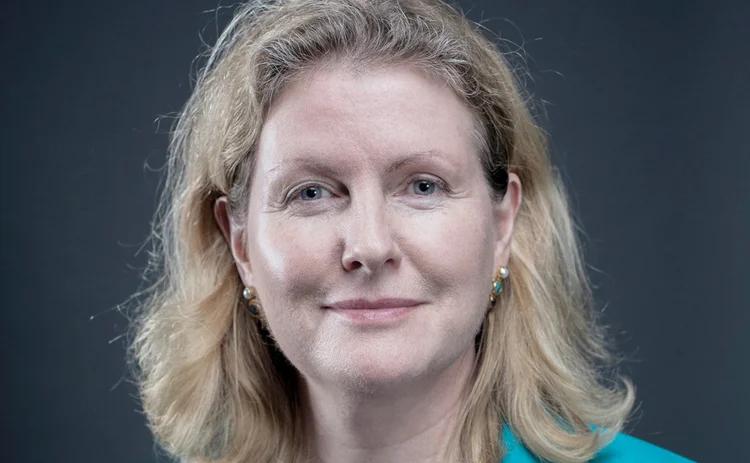
CII launches historic website as Insurance Museum project gathers momentum

Exclusive: The working group looking into the feasibility of an insurance museum in the Square Mile has rejected the idea of hosting exhibits within the new Museum of London in favour of a stand-alone site, should there be enough interest.
Last year Post revealed that former Chartered Insurance Institute president Reg Brown had been charged with looking at options for a permanent exhibition following the professional body’s move from its historic home on Aldermanbury to a smaller, more modern space in the city.
This has now been formalised into a committee, meanwhile the CII itself today launches an ‘Our History’ website dedicated to bringing the heritage of the organisation, and the wider evolution of insurance, to life.
This includes a 360-degree virtual tour of the Insurance Hall and displays the unique stained-glass windows of the historic building as well as the CII’s collection of more than 1500 Fire Marks, which were formerly on display in the staircase of the Aldermanbury building.
There are also digitalised versions of hundreds of insurance-related documents, dating back as far as 1669, plus rare, no longer in print books, that give valuable insight into past insurance processes.
The original 1912 Charter of the Chartered Insurance Institute can also be found on the site.
The CEO of the CII Sian Fisher, pictured, told Post: “There is no secret [about our potential end game] but with the ‘Our History’ website we are launching step one of the project. And we are doing a lot of preparatory work [for a potential museum], but that is a long journey that we are doing in stages and in a considered manner.
It has to be sustainable
“Because I am very happy for the CII to help galvanise this, but it has to be something that is sustainable. And while we are happy to get it going, I don’t want to get the market into something and then for everyone to say after three years that they are bored and the whole thing collapses.”
Reflecting on what has happened since the CII left Aldermanbury, Fisher added: “When we left we put a lot of effort into ensuring that the building was bought by a purchaser that had a commitment to its heritage and investing a substantial amount of money into renovating it. And at some juncture they will re-open the state rooms of the building as a venue so there will be no loss as to its usage.
“And secondly, there was quite a lot of stuff in the building which had been accumulated over the years. Now we have to have a sense of proportion about this because a lot of it is not of huge historical interest. There were a few items in the small museum that was part of the library; a maximum of 100 artefacts. And we have taken them away, had them looked at to make sure they are in a decent condition and those artefacts are back – or coming back – into the new office.”
Fisher added that the Charter and By-Laws of the CII are also back in the office, and will soon be joined by the Coat of Arms once it has been framed.
However, having employed an archivist to go through the CII’s vault and collection, a lot of material – from records to chains of office; artefacts to paintings – have been moved to secure storage, as no room can be found for them.
The extensive fire marque collection is being reviewed, and those of historic interest and value, could be displayed in the CII’s new board room at some point, she noted.
Risk-i-pedia
“What we don’t want to happen is that having taken a nice new modern office, to have random bits and pieces all around the place; if there is a place for them we will display them. Otherwise we will hold onto them until a time that we know where we are with the bigger [museum] project,” Fisher continued.
Reflecting on where the CII ‘Our History’ website could go next, she mentioned that the plan was to focus on the wider history of insurance, noting that whilst some disparate information can be found on Wik-i-pedia, it could pull this - and more - together and curate a broader ‘Risk-i-pedia’.
“So we will be doing that anyway. But the bigger project as to whether a virtual or physical insurance museum is viable, is a different endeavour and we have employed [creative consultancy Ocean Barefoot director] Jonathan Squirrel and pulled together a working group led by Reg to see which of – or both of – those options are realistic.”
As well as project manager Squirrel and chair Brown, the Insurance Museum Initiative working group includes CII chief operating officer John Bissell, London market veteran Terry Heyday, CII facilities manager Neville Moriarity, Veronica and Stephen Wilkison (both from the Insurance Institute of York).
The artefact trigger
Squirrel told Post that as well as positive conversations with a number individual insurance companies, the idea of the Insurance Museum has the support of a number of key representatives from the City of London including Dominic Christian, Henry Colthurst, Sue Langley, Bronek Masojada and Elizabeth Rogula.
“The [Aldermanbury] artefacts were the trigger in terms of a conversation about whether the CII could display them better, but you don’t want a museum full of old policies and fire marques, that is not going to attract people.
“So the plan now is to tell the story of insurance, get people to think about what it enables and document the evolution of the profession. To show how innovative the market is and act as a recruitment tool because people mostly fall into it by chance.”
When Post spoke to Brown last year, among the options that was being considered was including an insurance space within the new Museum of London when it relocates from its current site at the Barbican. However, Squirrel indicated this option was no longer on the table.
Fisher commented: “The Museum of London is not focused on the commerce history of the capital, but they are keen to link in [to any Insurance Museum] as they do by sign-posting people to the Bank of England Museum.
“They are trying to create more of a tourist attraction around the City itself because there has always been huge tourist traffic to the Tower of London, and a bit to the Monument and Museum of London itself. But if you think about The Guildhall and other places of interest there is a pretty amazing trail that you could create around the City.
“And if you could put an Insurance Museum around that area, then that would be another attraction as part of that set-up. And that is why it is not entirely fanciable that we could create something. But the issue is funding it which the CII cannot do on its own - and that is where the reality check comes in.”
Not a pipe dream
In terms of ‘seed funding’, Fisher notes that having consulted experts it is estimated it would take a minimum of £3m, and then another £10m to fit out reasonable sized space to allow for exhibitions and educational facilities. It would then take another £3m a year in terms of the annual running and exhibition costs, although she noted this could be covered by ticket sales and sponsorship.
“These are not insufficient numbers, but this is not a pipe dream, it has just got be something the whole market gets behind,” Fisher concluded.
“We have to be realistic that one of the long term objectives of any museum would be to raise public understanding of the importance of insurance, and also make young people aware that there are very interesting careers to be had in the sector. And I think those are two very worthwhile objectives that make this quite a compelling project. Let’s see if we can make it happen.”
Only users who have a paid subscription or are part of a corporate subscription are able to print or copy content.
To access these options, along with all other subscription benefits, please contact info@postonline.co.uk or view our subscription options here: http://subscriptions.postonline.co.uk/subscribe
You are currently unable to print this content. Please contact info@postonline.co.uk to find out more.
You are currently unable to copy this content. Please contact info@postonline.co.uk to find out more.
Copyright Infopro Digital Limited. All rights reserved.
As outlined in our terms and conditions, https://www.infopro-digital.com/terms-and-conditions/subscriptions/ (point 2.4), printing is limited to a single copy.
If you would like to purchase additional rights please email info@postonline.co.uk
Copyright Infopro Digital Limited. All rights reserved.
You may share this content using our article tools. As outlined in our terms and conditions, https://www.infopro-digital.com/terms-and-conditions/subscriptions/ (clause 2.4), an Authorised User may only make one copy of the materials for their own personal use. You must also comply with the restrictions in clause 2.5.
If you would like to purchase additional rights please email info@postonline.co.uk








